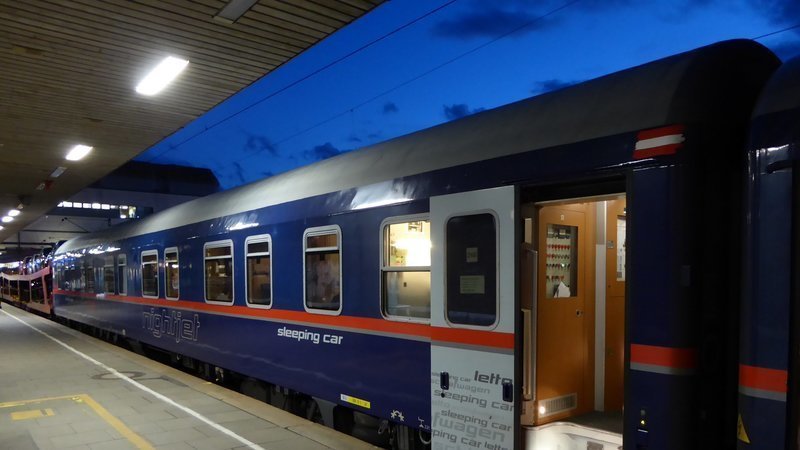Back on Track launched a petition urging the Spanish, French, and Portuguese governments (the latter of which is now taking presidency of the Council of the EU, in the first half of 2021 – The European Year of the Rail) to consider not only resuming the recently stopped Portugal-France night train connection, but also extending it to a major train hub in Europe, such as Paris (or potentially Brussels), instead of reaching just Hendaye in the French-Spanish border.
In March 2020, the last night trains ran the Lisbon-Madrid-Hendaye route, connecting the Portuguese capital to the Spanish one, and the French border. In May, Renfe announced the end of those connections. This policy goes against the current trend in Europe, where night trains are actually experiencing a revival, scoring new planned connections such as Rome – Amsterdam, Vienna – Munich – Paris, Barcelona – Amsterdam, Berlin – Brussels – Paris being set up as shown in the figure below. In fact, the German government proposed the TEE 2.0, a wider night train network in central Europe.
The cancelation of those connections is problematic for a couple of reasons:
- It will further displace potential passengers into flying, which is an important contributor to climate change, stimulating the growth of greenhouse emissions.
- It reduces the range of choices of the consumer, preventing any green and comfortable alternative for long journeys.
Why is this so important?
The main reason for the revival of night trains is the Climate Emergency which needs to be urgently tackled. We are destabilizing the planet’s balance at an alarming rate, and action needs to be taken in order to reduce greenhouse emissions, before harmful feedback loops kick in/get worse.
Flying, one of the currently most popular means of transport, is also one of the main offenders. In fact, estimates are that it contributes around 5% to climate change, and rising rapidly, due to the growth of the aviation industry. The pollutants emitted by this industry come in the form of CO2, nitrogen oxides (NOx), particulate matter and contrail/cirrus cloud formation. Not only are they damaging to the environment, they are also damaging to our health in the vicinity of airports.



 Stay informed!
Stay informed!